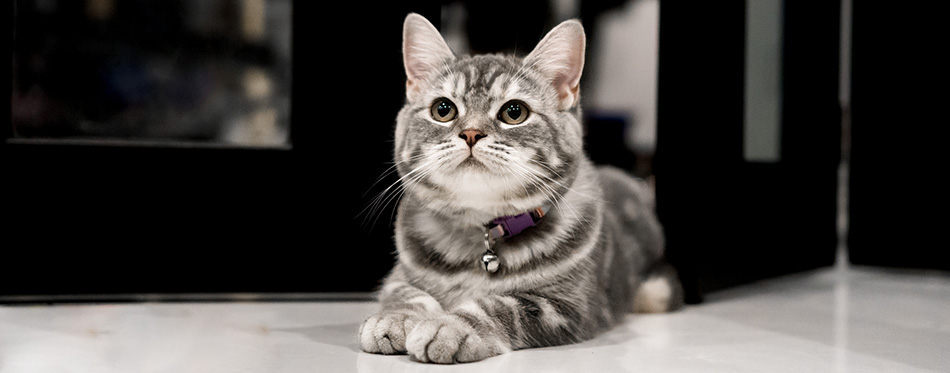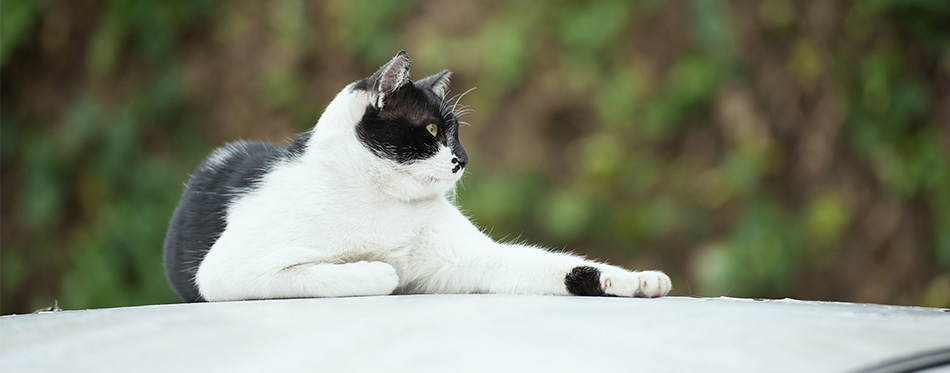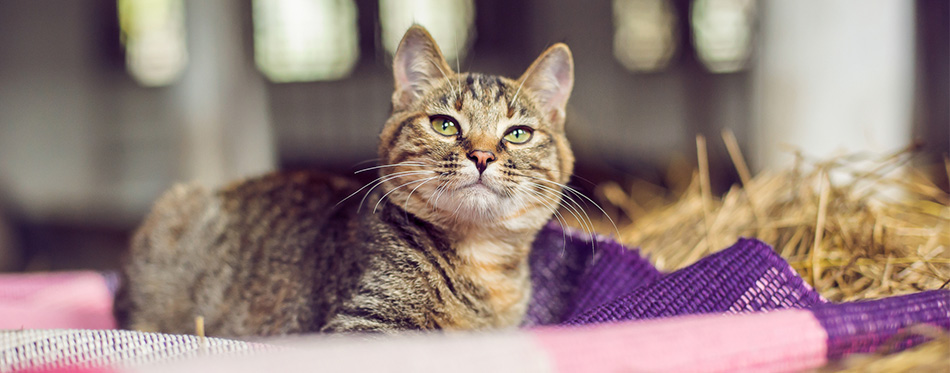Moggy cats might be a term you’re familiar with or it might be brand new to you. While it’s used a lot in everyday conversation and in films, it might not be clear what a moggy really is unless you’re a cat-person. Put simply, the term ‘Moggy’ is used to describe a mixed breed cat, whether the breed is known or not. While the term originated in Britain as a slang word to describe this type of mixed-breed cat, it has become a popular expression and is used all over the world. Since the Moggy cat isn’t a specific breed or even a specific mix, each one will look and act differently as their appearances and behaviors are undeterminable.
If you have a cat (or several) already or none at all, the Moggy cat can be a lovely and spirited addition to any family. In this article we’re going to take a look at some of the main characteristics found in Moggy cats, how they might look and act and how to look after one. So, let’s begin!

Where Did It All Begin?
Before we learn about the main characteristics of Moggies and how to care for one, let’s take a brief look at this cat’s history. Although they’ve been around for an incredibly long time, cat experts and scientists alike haven’t determined exactly when or where the Moggy cat developed. However, it is generally accepted that all domesticated cats originated from the African Wildcat (Felis Silvestris Lybica). As domesticated cats developed in all corners of the world over a long period of time, mixed breeding has naturally occurred and has resulted in Moggies existing in various forms, shapes and sizes. While this theory is speculative and doesn’t have any conclusive evidence, it is widely believed as the most likely reason for the widespread popularity of the Moggy cat.
Since the Moggy has developed all over the world from various breeds and crosses, they all look quite distinctively different. While some Moggies are short-haired, others are long-haired and while some have thick coats, others have soft, silky coats. Ultimately, they have developed over time to suit their environment. So, Moggies in cold climates typically have a longer or thicker coat compared to those that live in warmer climates. This proves that the Moggy cat naturally adapts to its environment through breeding and has developed to be a strong and robust breed.
What’s the Difference?
You might be wondering, “what’s the difference between a Moggy and a Pedigree cat?” While some differences might seem obvious, there are few things which aren’t quite as noticeable simply by appearance. For example, in most areas around the world it’s easier to locate a Moggy cat whether to buy or adopt. This is because the Moggy cat is one of the most common cat types around the world. Due to their popularity, Moggies also tend to be more affordable than their Pedigree cousins.
As we’ve already mentioned, the Moggy cat is typically strong and robust to match its environment and, as a result of this, has a naturally healthy and stronger body. Think of it as nature’s way of guaranteeing the Moggy has a healthy life, no matter what environment it lives in. Due to the nature of purebred cats however, some health conditions or temperament issues can appear and be passed on through the breed. Since Moggy cats aren’t selectively bred, this issue doesn’t often arise as health conditions are naturally removed through natural selection. The Moggy cat lifespan, then, is typically longer than that of pedigree breeds especially since purebred cats are accustomed to health conditions which interfere with their quality of life.
Main Characteristics of the Moggy Cat
There are many types of Moggy cats with many differences in appearance and personality. Let’s have a look at some of the most common characteristics of Moggy cats and how they might differ from Moggy to Moggy.
- Coat: The Moggy cat’s coat can either be long or short with soft, silky hair or coarse, fleece-like hair. However, short-haired Moggies are certainly the most common as the short hair gene is dominant meaning it’s more likely to be passed on. The coat color can also vary depending on the parent’s genes but you can expect any color or combination found in other cats. For example, a Moggy cat can be black, white, brown, tan, ginger, red, white or any possible combination of these colors.
- Size: Although both height and weight depend on the parent’s genes and the cat’s diet and exercise habits, Moggies are similar to the average sized purebred cat. Due to their natural breeding, they aren’t typically accustomed to growth disorders or general health conditions which affect weight. However, anomalies can occur and Moggies aren’t immune to health disorders so they can appear later in life.
- Personality: Since there are several types of moggy cats, there are several types of behaviors found in these cats too. Although these behaviors typically come from the cat’s parents, they can sometimes develop naturally depending on the cat’s upbringing and environment.

Moggy Cat Grooming
As far as grooming is concerned, the Moggy cat is fairly similar to any other pedigree cat. While they spend roughly the same amount of time grooming themselves as other cats, Moggies typically don’t require as much grooming from humans. This is because many Pedigrees are bred for their aesthetically beautiful looks (such as a long, silky coat) which requires constant maintenance. So, other than occasional brushing, most Moggy cats won’t require much attention regarding their coats. Ear cleaning, teeth brushing and nail trimming should be done regularly (every week to every 4 weeks), just like any with any other cat. So, if you’re looking for a fairly low-maintenance kitty, then the Moggy cat might just be the perfect choice for you!
You may also like our guides on Cat Ear Cleaners, Cat Toothbrushes, and Cat Nail Clippers.
Moggy Cat Health
As previously mentioned, Moggy cats are typically healthier than the average Pedigree for a few reasons. Firstly, pedigrees are purposefully bred to maintain certain behavioral or physical characteristics which can result in passed on medical conditions if the breeding isn’t monitored carefully. Conversely, Moggies are usually bred without the intention of continuing desired characteristics, meaning medical conditions or behavioral problems are less likely to be passed on.
Although Moggies tend to have naturally healthier lives, they aren’t immune to medical problems and are susceptible to illnesses just like any other cat. Keeping an eye on your Moggy cat’s diet, weight fluctuations and behavioral changes will give you the best chance of noticing any health problems early on. Reporting these changes to your vet and providing your cat with regular checkups will also minimize risks and keep them healthy. So, with a healthy and balanced diet, a caring family to look after it and a comfortable environment, the Moggy cat’s lifespan can be much longer than the average Pedigree. They can often live between 15 to 20 years!
Feeding a Moggy Cat
Moggy cats require a diet which is high in animal-based protein such as meat, poultry or fish. This is because wild cats and domesticated cats are natural carnivores and require a diet of mostly protein, balanced with some carbohydrates and essential nutrients and vitamins. Moggy cats can gain weight easily if overfed or if their diet is unbalanced so take your time to find the right balance and seek professional advice from a vet if you notice irregular weight fluctuations or appetite loss.
Check out our guides on the Best Wet Cat Food, Best Dry Cat Food, and Best High Protein Cat Food.
Moggy Temperament
As we’ve covered already, the Moggy cat’s personality can vary greatly depending on its parents and its upbringing. Unlike Pedigree cats, the Moggy doesn’t have specific, predictable behaviors which are common since each one is entirely different. While some Moggies might be timid, shy or cautious, others can be confidently affectionate or possibly even aggressive during their adolescence. No matter how troubling their behavior might be, Moggies can be trained thoroughly to remove unwanted behaviors and typically grow to be affectionate and loving animals if they receive care and nurturing from a loving family.

Final Thoughts
If you’re looking to adopt yet another cat to your feline family or if you’re looking for your first pet, the Moggy is the perfect choice for any individual. Since each Moggy cat can be entirely different to another, there’s no way to tell what type of Moggy you’re going to get and this, to many Moggy owners, is the best part! With love, care, and some training, your Moggy will grow up to be as loving and affectionate as you treat it.

